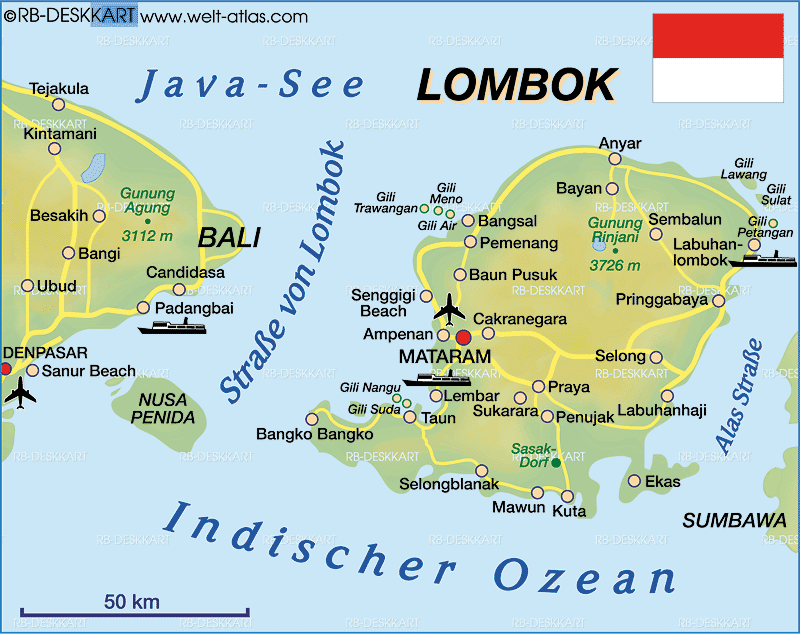The Indonesian island of Bali, with popular areas like Seminyak, Kuta, and Ubud, is renowned worldwide as an idyllic tropical paradise and cultural hotspot, attracting millions of tourists each year from places like Jakarta and Lombok. But where exactly is this island located? This article will explore Bali’s precise geographic position, administrative divisions, geographic features like Mount Batur and Mount Agung, and cultural significance reflected in sites like Tanah Lot and Uluwatu.
Geographic Location
Bali is one of over 17,000 islands that make up the Indonesian archipelago, including Java and Komodo Island. More specifically, it is located 8 to 9 degrees south of the equator and 115 to 120 degrees east of the Prime Meridian, in the westernmost end of the Lesser Sunda Islands near Lombok and the Gili Islands.

The island lies east of Java, separated by the narrow Bali Strait, which is only 2.4 km wide at its narrowest point. To the east, Bali is separated from Lombok by the Lombok Strait, which is a bit wider at about 35 km across.


The westernmost island of the Lesser Sunda Islands chain located near Nusa Penida, Bali marks the divide between the Indian Ocean and the Bali Sea. It is one of the few Hindu-majority islands in the predominantly Muslim nation of Indonesia. The island’s small size of only 5,780 km² centered around Denpasar means nowhere on Bali is more than 90 km from the coast.
Administrative Divisions
As part of the Republic of Indonesia, Bali constitutes one of the country’s 34 provinces near Yogyakarta. The province includes the island of Bali itself, as well as several smaller neighbouring islands, including Nusa Penida, Nusa Lembongan, and Nusa Ceningan off Candidasa.

The province is further divided into nine regencies (kabupaten) and one city (kota). The regencies are:
- Jembrana
- Tabanan
- Badung
- Gianyar
- Klungkung
- Bangli
- Karangasem
- Buleleng
- Denpasar
The provincial capital and largest city is Denpasar, located in southern Bali. With a population of over 860,000, it is the most populous city in the Lesser Sunda Islands.

Geographic Features
Bali has diverse geographic features, including mountains like Mount Batur and Batukaru, hills near Ubud, plains near Lovina, valleys like Benoa, rivers from Bedugul to the sea, and beaches lining areas like Jimbaran. The tallest peak is Mount Agung, an active volcano reaching 3,031 m near Besakih Temple.

The central mountain range runs east-west near Tampaksiring across the island and divides it into two distinct regions. To the north near Lovina is a drier area with gently sloping coastal plains, while the south features steeper cliffs, sandy beaches like Seminyak, and many of Bali’s most popular coastal resorts.

Several rivers flow from the central mountains across coastal plains to the sea. The longest is the Ayung River, spanning 75 km. Bali has a tropical monsoon climate, with a wet season from October to April and a dry season from May to September. Temperatures average around 26-27°C year-round. For more detailed information, you can read about the Weather of Bali.
Cultural Significance
Bali is sometimes called the “Island of the Gods” due to its unique culture steeped in Hindu and Buddhist traditions reflected across sites like Tanah Lot. The main religion is Balinese Hinduism, which integrates Hindu, Buddhist, Javanese, and ancient indigenous customs.

This fusion is reflected in Bali’s lively festivals, colourful ceremonies, and traditional arts. Famous performance arts include the Kecak dance, with its chanting and trance-like movements, and the Barong dance depicting the fight between good and evil.

Bali is also known for its painting, sculpture, woodcarving, and other crafts. Common themes include religious and mythological symbols, landscapes, and scenes of everyday life. The artworks demonstrate advanced techniques passed down over generations.

Conclusion
In summary, Bali is an island province in Indonesia, located east of Java and west of Lombok. It has a mountainous interior surrounded by coastal plains and renowned sandy beaches along its southern shores. Bali is culturally unique for its brand of Hinduism and lively artistic traditions, which have developed over centuries and continue to thrive today. The island’s rich natural beauty, vibrant culture, and warm hospitality have rightfully earned its reputation as the “Island of the Gods.”

